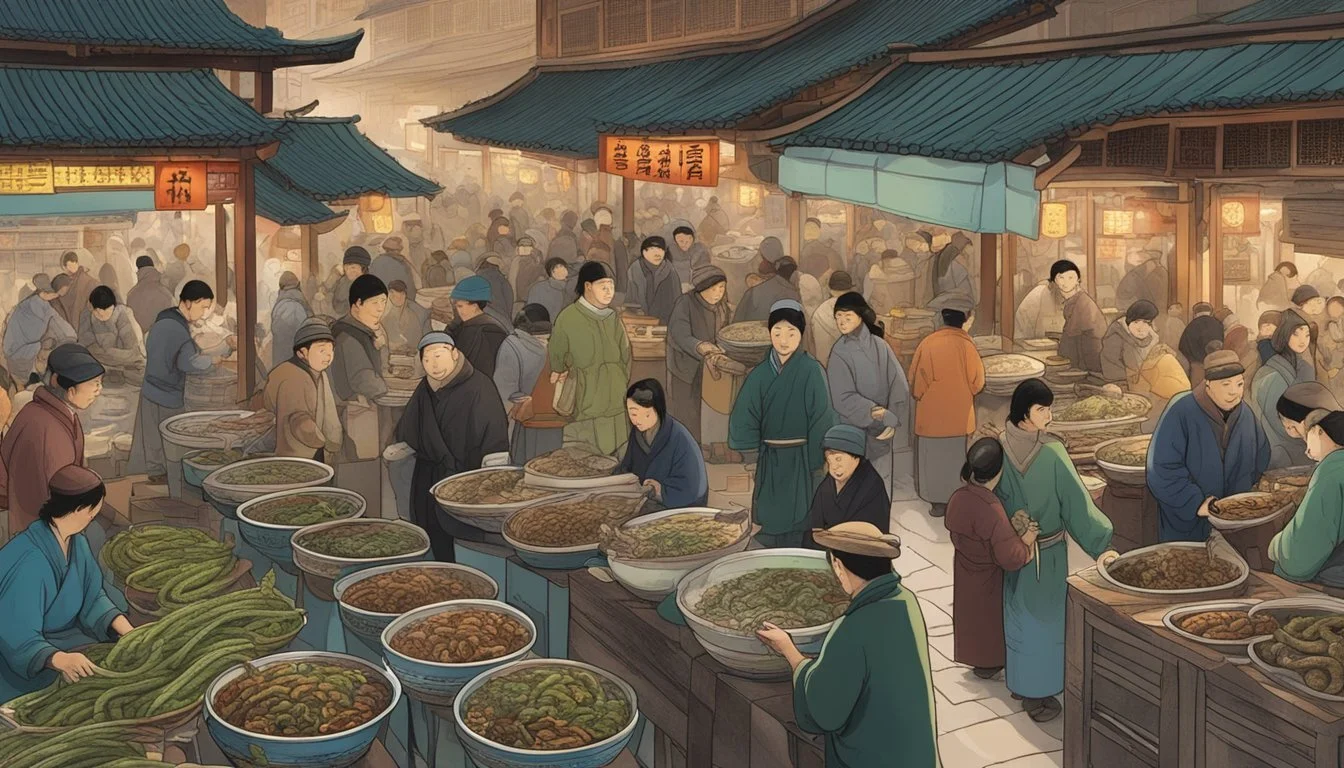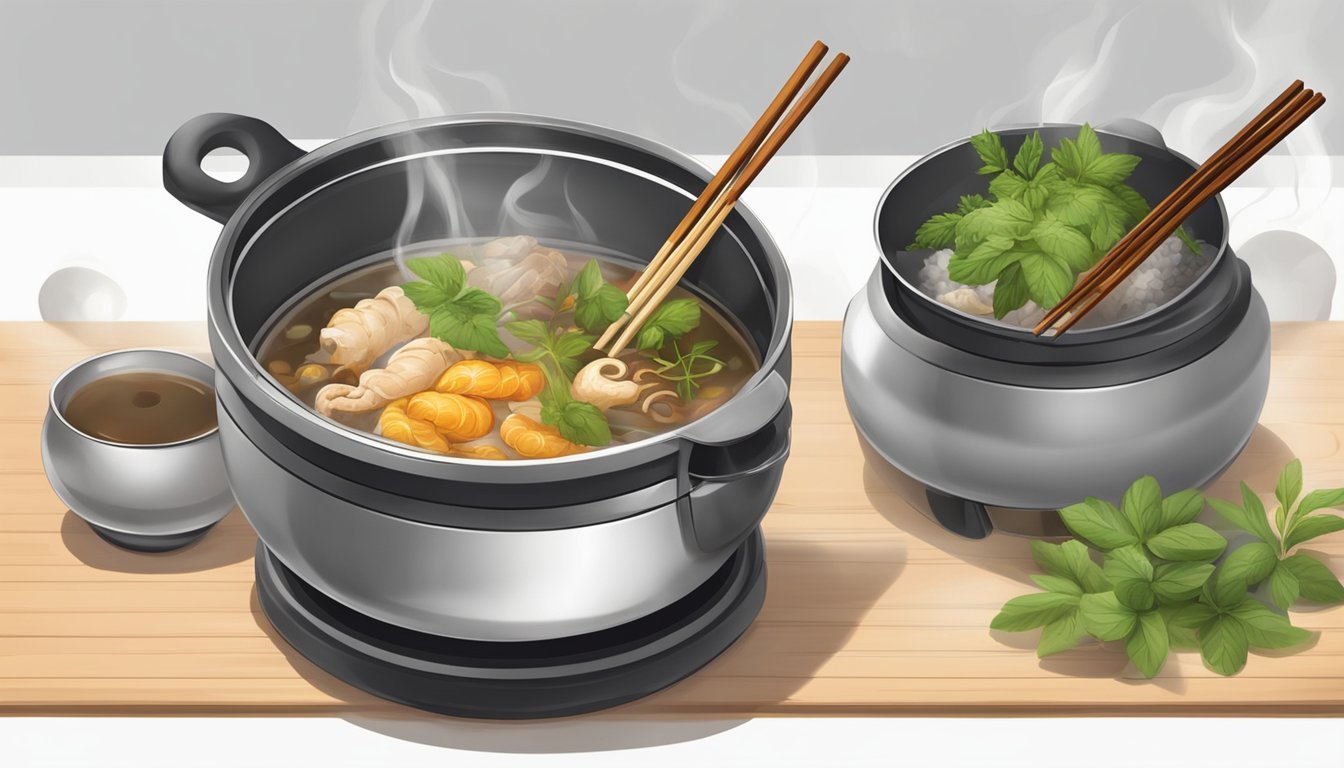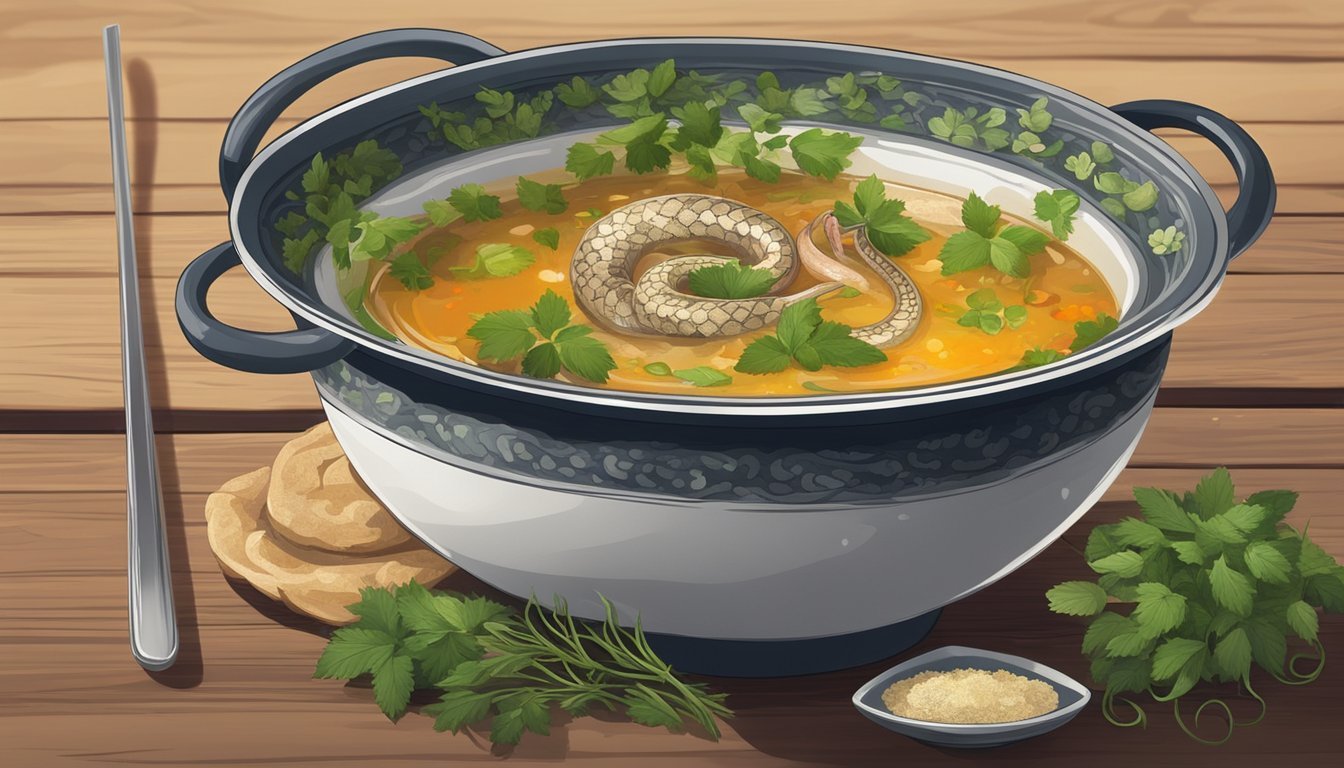Snake Soup Exploring Health Benefits and Culinary Delights of a Chinese Tradition
Snake soup is a traditional Chinese dish that has held a significant place in Cantonese cuisine. Revered both for its flavors and its purported health benefits, the dish is often composed of various types of snake meat as the main ingredients. The preparation of this delicacy involves a meticulous cooking process wherein the snake's meat is combined with a rich broth and an array of other ingredients that may include chicken, pork bone, and Chinese herbs.
The appeal of snake soup extends beyond its taste to its cultural status as a health supplement. Believed to contain high levels of protein and collagen, the soup is traditionally consumed during cooler months for its warming qualities and to boost overall vitality. Authentic snake soup incorporates a blend of spices and additional components like chrysanthemum leaves and fried dough, which contribute to its unique, slightly sweet flavor profile.
Despite its popularity in regions like Hong Kong, where it is especially prized, snake soup is gradually becoming less common due to various factors including wildlife conservation efforts and changing culinary tastes. Nonetheless, the dish remains an emblem of traditional Chinese gastronomy, embodying an intricate balance of health, flavor, and cultural heritage.
Historical Significance
Snake soup has stood the test of time in Chinese culture, not merely as a delicacy but also for its attributed health benefits, deeply intertwined with traditional Chinese medicine. This dish's evolutionary journey through Chinese history has reinforced its status in Cantonese cuisine and the broader spectrum of Chinese culinary traditions.
Chinese Medicine and Snake Soup
In traditional Chinese medicine, snake soup is revered for its supposed healing properties. Chinese medicine suggests that snake meat can positively impact blood circulation and bolster the immune system. It's believed that its consumption can harmonize the body's yin and yang, particularly during the colder months when it's said to offer warmth and vitality.
Evolution of Snake Soup in Chinese Culture
The evolution of snake soup in Chinese culture traces back to as early as the third century BCE. Initially perceived as a luxury dish, it has undergone a substantial transformation within Chinese culture, especially Cantonese cuisine. Over time, it became ingrained as a winter staple among the masses, signifying not only sustenance but also a rich heritage of culinary craftsmanship in China.
Cultural and Regional Influence
Snake soup has deep roots in Chinese culinary practices, particularly within Cantonese cuisine. It is a dish that reflects the synergy of regional flavor, cultural significance, and traditional cooking methods.
Snake Soup as a Cantonese Delicacy
Cantonese cuisine is known for its variety and richness, often incorporating medicinal ingredients into dishes. Snake soup is a quintessential example, revered not only for its complex flavors but also for its perceived health benefits. Traditionally, it is made using the meats of various snake species, which is believed to warm the body during colder months.
The Tradition in Hong Kong
Hong Kong has been a bastion for this unique delicacy. The preparation of snake soup in Hong Kong is often associated with multi-generational family businesses, passing down recipes and techniques. The soup is a combination of subtly sweet flavors, typically achieved by including ingredients such as chrysanthemum leaves and a mix of spices. It's a testament to the region's steadfast commitment to preserving traditional Cantonese cuisine.
Notable Restaurants and Regions
Ser Wong Fun, She Wong Lam, and Shia Wong Hip are among the acclaimed snake restaurants in Hong Kong, particularly in the Central district. These establishments are recognized for their expertise and have been serving snake soup for decades, some since the 19th century.
Guangdong Province is the broader region where this tradition emanates. Here, snake shops and restaurants are part of the culinary landscape. The persistence of these eateries, despite modern shifts in dining preferences, underscores the cultural significance of snake soup in the region.
Ingredients and Preparation
In exploring the rich tapestry of traditional Chinese cuisine, snake soup stands out for its unique combination of flavors and health benefits. This section takes a closer look at the components that make up this dish and the meticulous process involved in its creation.
Common Ingredients
The foundation of snake soup is rooted in a diverse blend of components. Essential to the soup are:
Snake meat: Most commonly, types of water snake or python are used.
Chicken meat: Adds a familiar poultry flavor complementing the snake.
Pork bones: Imparts richness and depth to the broth.
Ginger: Lends a warm, spicy kick.
Fungus: Often black fungus is utilized for its jelly-like texture.
Spices and herbs: Star anise and lemon leaves are staple embellishments.
Broth: Water is the primary medium in which all these ingredients meld.
Selection of Snakes
The choice of snakes is pivotal. Traditionally, a mix of venomous snakes like Chinese cobra or banded krait is incorporated. However, all snakes are thoroughly processed to neutralize toxins before use. Non-venomous varieties such as the water snake are favored for their tender meat, whereas the more muscular python is appreciated for its chewy texture.
Preparation Techniques
The preparation of snake soup is an exercise in patience and skill. Initial steps often involve:
Cleaning and butchering: Live snakes are managed with extreme care, cleaned, and their meat is then tenderly separated.
Meat preparation: The snake meat is typically shredded, and alongside chicken, it is sometimes fried lightly to enhance flavor.
Simmering the broth: All ingredients are then introduced into the pot, covered with water, and left to simmer.
The simmering stage is crucial; it often extends over several hours on a medium-low heat, allowing the different flavors to thoroughly intermingle and produce a harmoniously flavored broth. Regular stirring is essential to ensure the even cooking of ingredients and the perfect amalgamation of flavors.
Flavor Profile and Textures
Snake soup offers a complex flavor profile and varied textures that reflect its traditional Chinese heritage. The dish presents a unique blend of savory and slightly sweet notes alongside an array of spices that contribute to its distinctive taste and aromatic allure.
Taste Descriptions
The broth of snake soup typically carries a slightly sweet undertone, attributed to the inclusion of chrysanthemum leaves. The meat itself is often compared to chicken in both texture and taste, offering a familiar poultry-like experience with a hint of gaminess that sets it apart. The meat's texture can vary from tender to springy, depending on the cooking time and the type of snake used.
Tender: Achieved through slow cooking, mirroring the succulence of well-cooked chicken meat.
Springy: Due to the muscle structure of snake, resulting in a firmer bite.
Spices and Their Roles
The role of spices in snake soup cannot be overstated, as they are crucial in achieving the robust depth of flavor the dish is known for. Ginger and star anise are essential, both acting as warming components that counterbalance the coolness traditionally associated with snake meat.
Ginger: Imparts a piquant sharpness, offsetting the gaminess while invoking a comforting warmth.
Star Anise: Provides a licorice-like sweetness, deepening the complexity of the soup's profile.
Additional ingredients like lemongrass and black pepper often join the ensemble to further enhance the aromatic quality and introduce a slight kick. Seasoning with salt is applied judiciously to accentuate the existing flavors without overpowering them. Together, these ingredients create a harmonious blend, infusing the soup with layers of flavor and a medley of textures that are both rich and nuanced.
Nutritional and Health Benefits
As a dish steeped in tradition, snake soup is regarded not only for its flavor but also for its health benefits. It is often consumed for its perceived medicinal properties, particularly in enhancing bodily functions such as blood circulation and boosting the immune system.
Snake Meat as a Health Supplement
Snake meat, the primary ingredient in this dish, is a source of protein that's low in overall calories but rich in amino acids, considered essential for the body. It's believed that certain types of snake meat can act as a health supplement, strengthening the body's blood circulation and balancing the yin and yang – fundamental concepts in Traditional Chinese Medicine representing opposite but complementary forces.
Protein content: High levels of protein in snake meat contribute to muscle maintenance and repair.
Amino acids: The presence of various amino acids supports the synthesis of enzymes and hormones, impacting overall health.
Contributions to Well-Being
Consumers believe that snake soup has several contributions to well-being, mainly due to its warm nature. It's considered beneficial for:
Immune system: Supporting immunity through nutrient-rich ingredients.
Joint pain and arthritis: The collagen and reported anti-inflammatory properties could alleviate symptoms of joint ailments.
Nutritional value: With a substantial amount of protein and a moderate level of calories, it is thought to be a nutritive addition to a balanced diet.
The nutritional value of a small bowl of snake soup may include about 300 calories and 20 grams of fat, contributing to the needs of a balanced diet without excessive caloric intake. However, one should be mindful of the sodium content, which may be significant.
Please note that while snake soup is credited with several health benefits, scientific evidence may not robustly support all claims, and consumption should align with individual dietary requirements and guidelines.
Ethical Considerations and Controversies
The ethical considerations surrounding snake soup involve the treatment of snakes during preparation and the impact on animal welfare. These complex issues are often at the heart of the debates around the traditional dish.
Handling of Snakes
In many cases, venomous snakes are used for snake soup, demanding special training for chefs to handle them safely. Concerns arise when live snakes are involved, particularly when they are skinned alive—an act seen as cruel by animal rights advocates. The process can be distressing not only to the snakes but also potentially dangerous to the chefs involved.
Culinary Practices and Animal Welfare
The culinary tradition of snake soup has been scrutinized for its potential impact on animal welfare. The method of preparing live snakes, sometimes referred to as the snake king, has been subject to ethical criticism. More humane treatment of animals in the culinary sector is becoming a priority, which includes the way chefs are trained and how they manage the ethical aspects of their culinary practices.
Modern-Day Consumption
The consumption of snake soup has transitioned over the years, becoming a rare indulgence connected to cultural heritage, especially within Cantonese cuisine. As the dish weaves through the tapestry of modern dietary trends, its presence in contemporary society fluctuates between esteemed rarity and cultural fusion.
Popularity and Rarity
In recent years, snake soup remains as a distinct element of Cantonese culinary tradition, especially in Hong Kong, where it is still considered a delicacy. Once widely available and affordable, it has become rarer due to various factors such as increased wildlife protection laws and public health concerns. The practice of consuming snake soup is typically seen during the winter months, where it is believed to have warming and medicinal properties. Traditionally enjoyed amongst friends and family, or even served to officials as a sign of respect, its popularity has dwindled due to the dish becoming less common in the face of contemporary dining trends.
Snake Soup in Contemporary Society
In modern times, while its consumption has lowered, those who offer snake soup typically do so with a nod to cultural tradition and culinary artisanship. Recognized restaurants or specialty vendors might present snake soup as part of a cultural experience or culinary adventure for both locals and tourists alike. It is not uncommon to find the dish being reinvented or integrated into fusion cuisines, striving to maintain a connection to its cultural roots while appealing to a broader palate. However, snake soup no longer holds its once ubiquitous appeal and is instead a unique offering in select dining establishments that uphold traditional Cantonese practices.









